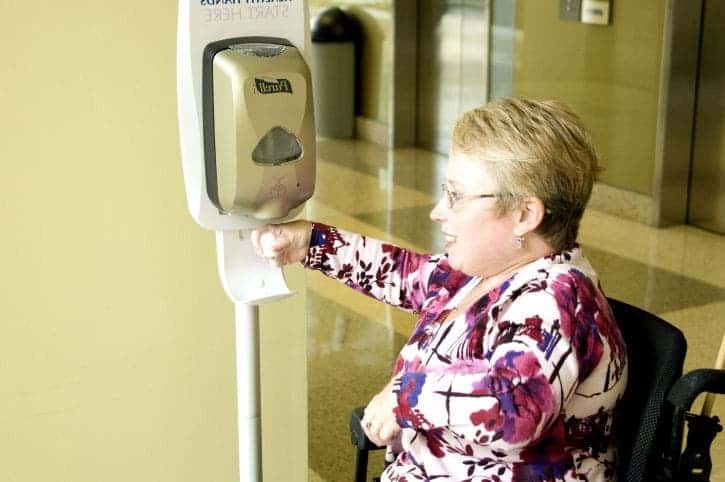Many hospitals around the world have installed hand sanitizers for staff, visitors, and patients to use. However, the bacteria was quick to react. A new study found that superbugs found in Australian hospitals have become up to ten times more tolerant to alcohol exposure, the key ingredient in hand sanitizers.
These bacteria hold their liquor
After hospitals across Australia started massively adopting alcohol-based hand sanitizers in the early 2000s, the rate of infections dropped, signaling that the introduction had a positive effect. Other types of infections, however, weren’t reduced. In fact, the incidence of some infections — enterococcal infections, in particular, which affect the digestive tract, bladder, and heart — actually went up. And this wasn’t happening just in Australia, but around the world.
Enterococci infections are the leading cause of sepsis — a life-threatening condition in which the body is fighting a severe infection that has spread via the bloodstream — and are responsible for around 10% of bacterial infections acquired from hospitals.
Researchers at the University of Melbourne’s Doherty Institute for Infection and Immunity compared 139 types of bacterial strains collected between 1997 and 2015. The cultured bacteria collected after 2009 were up to 10 times more tolerant to alcohol than pre-2004 bacteria — the year the local government pushed the use of hand sanitizers in hospitals.
These bacteria aren’t resistant to alcohol, not yet at least. However, they’ve built up a huge tolerance. When the researchers incrementally raised the concentration of alcohol to which each type of bacteria was exposed, the tolerant-variety started dying at around 70% alcohol mixture, whereas most hand sanitizers carry 60% alcohol.
One of the greatest challenges in modern medicine is the growing problem of antibiotic resistance, which occurs when an antibiotic is no longer effective at controlling or killing bacterial growth. Bacteria which are ‘resistant’ can multiply in the presence of various therapeutic levels of an antibiotic. Sometimes, increasing the dose of an antibiotic can help tackle a more severe infection but in some instances — and these are becoming more and more frequent — no dose seems to control the bacterial growth. Each year, 25,000 patients from the EU and 63,000 patients from the USA die because of hospital-acquired bacterial infections which are resistant to multidrug-action.
What’s worrisome about these latest findings is that many of the alcohol-tolerant bacteria are also resistant to multiple antibiotics. For instance, half of such bacterial strains don’t respond to vancomycin, a very potent antibiotic which is typically used as a last line of defense when treating infections.
Writing in Science Translational Medicine, the researchers recommend that hospitals should adhere to stricter sanitizing procedures. Feeling confident that alcohol sanitizers destroy most bacteria, medical staff might feel overly confident that they’re hands are sanitized, not bothering to use soap and water afterward. However, the simple act of rubbing bacteria off the skin is still one of the most effective methods for controlling bacterial infections. This latest study should serve as a reminder.
In the future, research will have to establish which is a safe alcohol-threshold for modern sanitizers to use. It might even be possible that some bacteria will become resistant to alcohol.










